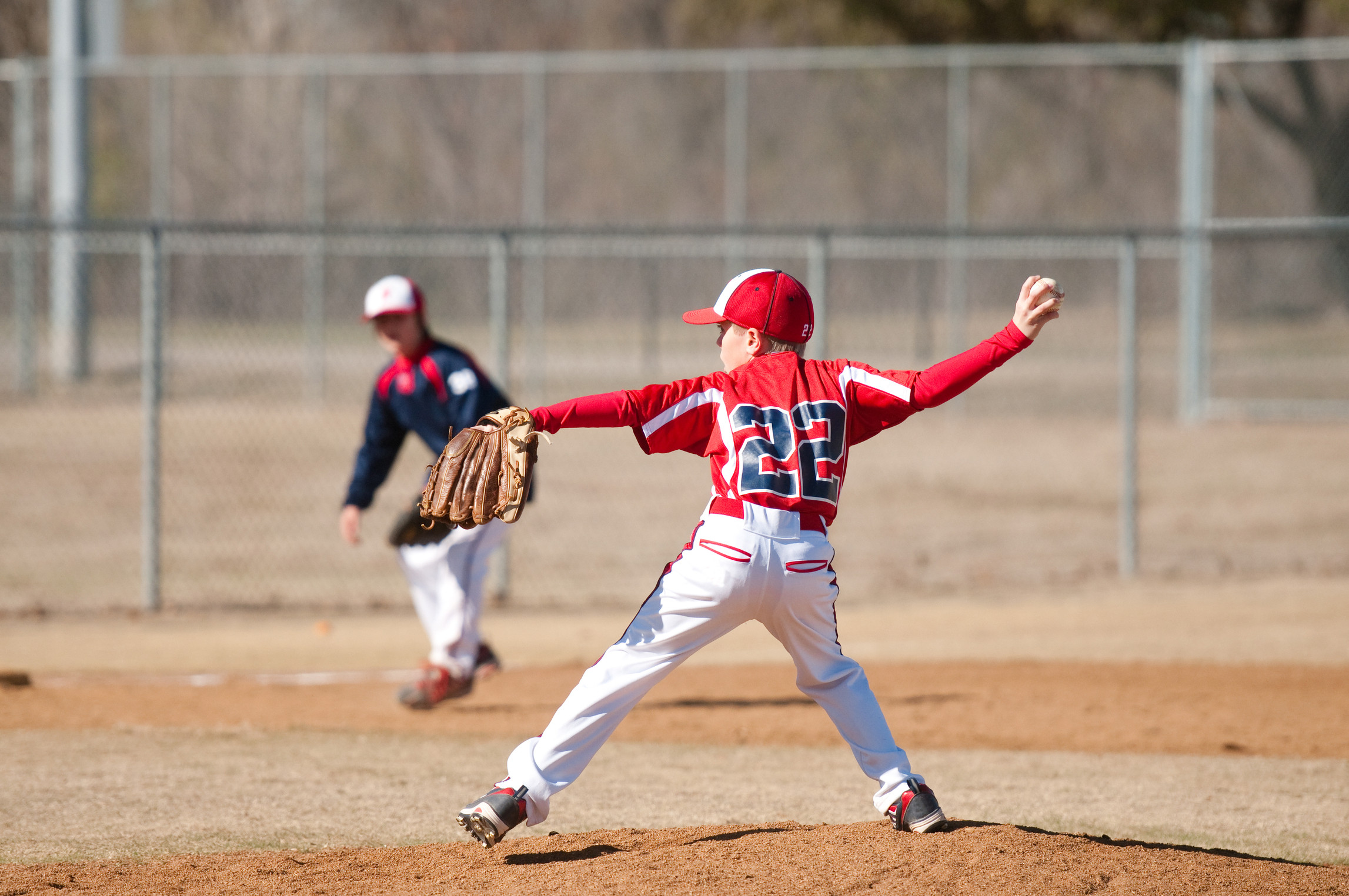Your child may be complaining about a sore elbow, but is it more than just a strained muscle?
Your child may have something called “Panner’s Disease,” or a rare bone condition that comes from overuse of the elbow. It occurs most commonly in children who are very active in baseball, gymnastics, or other sports that put repeated stress or pressure on the elbow.Here is some information on Panner’s Disease:
What
Panner’s Disease affects the dominant arm in youth athletes typically under the age of 10. Here are the symptoms of Panner’s Disease:
- Swelling
- Tenderness
- Stiffness
- Inability to straighten elbow
- Inability to fully turn the hand over
These symptoms can often occur suddenly and be due to no specific injury or trauma.
How
Panner’s Disease affects the growth plate of the elbow. This growth plate is the part of the elbow that determines how long the arm will be in adulthood. It’s a piece of cartilage at the end of the bone that converts cartilage cells into bone cells as the child matures.
Panner’s Disease is a form of osteochondrosis, which is a medical phenomenon where there is no blood supply given to an area of developing bone. Because of this lack of blood, tissues die leading to a deterioration of the growth plate in the bone.
Osteochondrosis happens during Panner’s Disease when the blood supply to the capitellum is stopped. The capitellum is at the end of the humerus bone closest to the elbow. Cells within the capitellum die due to absence of blood so the surrounding bones collapse, making the capitellum flat instead of curved.
Eventually, the capitellum will become round again as the body heals the growth plate, regrows new tissue, and rebuilds the bone that collapsed. This process is called “remodeling”. The body is really a miracle healer—it often just takes a little time.
Why
The disruption of blood supply to the growth plate comes from overuse of the elbow, typically in sports. The disease can also be hereditary. The area becomes swollen and irritated because of the mild trauma exercises put on the elbow.
Recovery
Recovery can be long, sometimes over a period of one to two years, but most children recover without any future complications to the area. The best remedy for full recovery is rest, but there may be other interventions needed, depending on the severity. As Dr. Skedros has been an elbow surgeon for 17 years, he can help diagnose the condition and provide options for treatment that will have your child feeling in tip-top shape soon.

